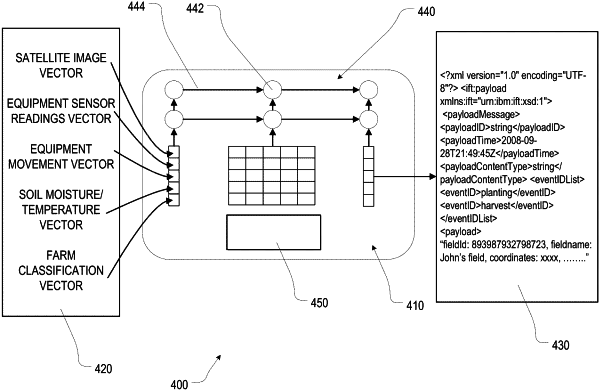| CPC G06Q 50/02 (2013.01) [G06N 3/08 (2013.01); G06N 20/00 (2019.01); G06Q 10/08 (2013.01); G06Q 20/389 (2013.01); G06Q 30/0205 (2013.01)] | 20 Claims |

|
1. A computer-based method for automatically identifying significant events for food traceability for use by a distributed agriculture supply chain, comprising:
training a neural network to automatically identify significant events for food traceability, wherein the neural network comprises a plurality of artificial cells interconnected via a plurality of gates, and wherein each gate encodes a strength of a relationship in the connection between an output of one artificial cell and an input of another artificial cell, the training comprising:
receiving training data, wherein the training data comprises labeled event data for a plurality of farms over a plurality of days;
generating, by the neural network, a probability factor representing a chance that an event in the training data will be significant for food traceability; and
comparing the generated probability to the received labels;
in response to the comparison, updating the encoded strength of at least some of the gates;
receiving data from a plurality of sensors, wherein each of the sensors generates a series of events about a respective one or more of a plurality of agriculture supply chain entities;
automatically filtering, by the trained neural network, events in the plurality of series of events having a significance for food traceability less than a threshold; and
automatically selectively transmitting, by a network interface, only the data associated with the unfiltered events to a plurality of blockchain nodes of a distributed ledger.
|